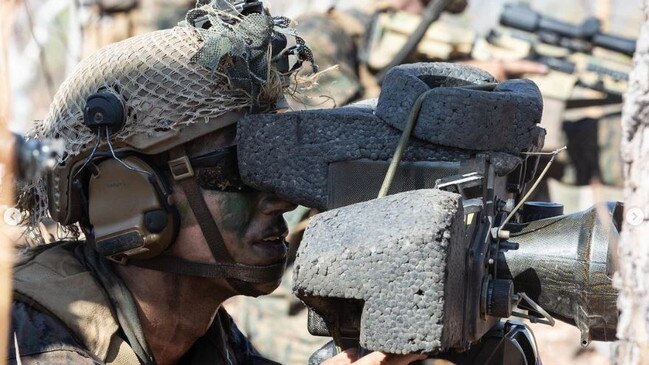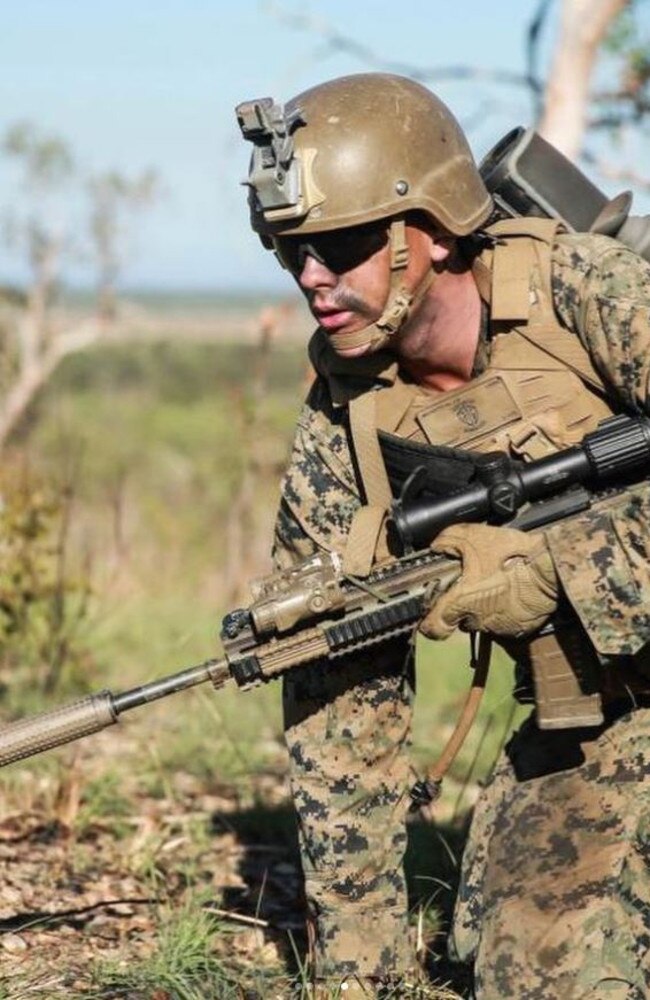Inside the US Marine Corps training mission in Australia
Thousands of US Marines have arrived on our shores for a mission that is also bolstering the amphibious warfighting capability of the Australian Army. See the photos.
National
Don't miss out on the headlines from National. Followed categories will be added to My News.
Exclusive: The US Marines are helping the Australian Army sharpen its amphibious warfighting capability during a six-month mission down under that is preparing both countries to respond to Chinese military aggression.
The Army’s 1st Brigade, based in Darwin, is tapping into the expertise of up to 2500 Marines as the unit is redesigned to specialise in littoral combat in coastal areas that will be crucial in any Indo-Pacific conflict.
The Marines – who arrived in the Northern Territory for their 12th annual rotation in March – specialise in amphibious operations and are also in the middle of a major transformation to match China’s armed forces.
Colonel Brendan Sullivan, the commanding officer of this year’s Marine rotational force, said this year’s training exercises in Australia and the surrounding region offered “incredible opportunities”.

Asked if they were seeking to replicate potential conflict scenarios in the South China Sea, the Pacific Islands or the Taiwan Strait, Colonel Sullivan said that was something “we’re grappling with right now” as the Marines sought to project force across a greater range.
“We’re going through a force design process where we’re trying to achieve the force that we think we’re going to need to have in the years ahead … and trying to get after some of the challenges that we think are associated in those operating environments,” he said.
“We’re trying to posture so that we can be ready to operate in that type of environment in the near future.”

This year’s Marine exercises include Predator’s Run in the Northern Territory and Melville Island, north of Darwin.
“That’s really reflecting the shift in focus for the 1st Brigade into a more littoral manoeuvre focus, which is right up the Marine Corps’ alley,” Colonel Sullivan said.

A key priority of the Australian government’s Defence Strategic Review, released last month, was that the Army be “transformed and optimised for littoral manoeuvre operations by sea, land and air”, including with the fast-tracked acquisition of new landing craft.

Captain Mitchell Livingstone, the commanding officer at Australia’s Northern Command headquarters, said training alongside the Marines offered major benefits for his soldiers.

“Working with the Marines gives us access to technology and skills and a broader understanding of the bigger picture, and what that does is improve interoperability across the whole ADF,” he said.

Colonel Sullivan said Australia’s mix of coastal, jungle and desert areas offered “superb training” environments which the Marines could not “find anywhere else in the world”.
This year’s rotation, which runs until October, will take the Marines across Australia as well as into Indonesia, Malaysia and the Philippines, including for training on humanitarian missions which Colonel Sullivan said loomed as their most likely real-world operations.
“One of the key aspects of why we’re here is to promote peace and stability throughout the region,” he said.
“This alliance is like no other. There’s no better ally for the United States and there’s no more interoperable partner for the Marine Corps than the ADF.”
More Coverage
Originally published as Inside the US Marine Corps training mission in Australia




